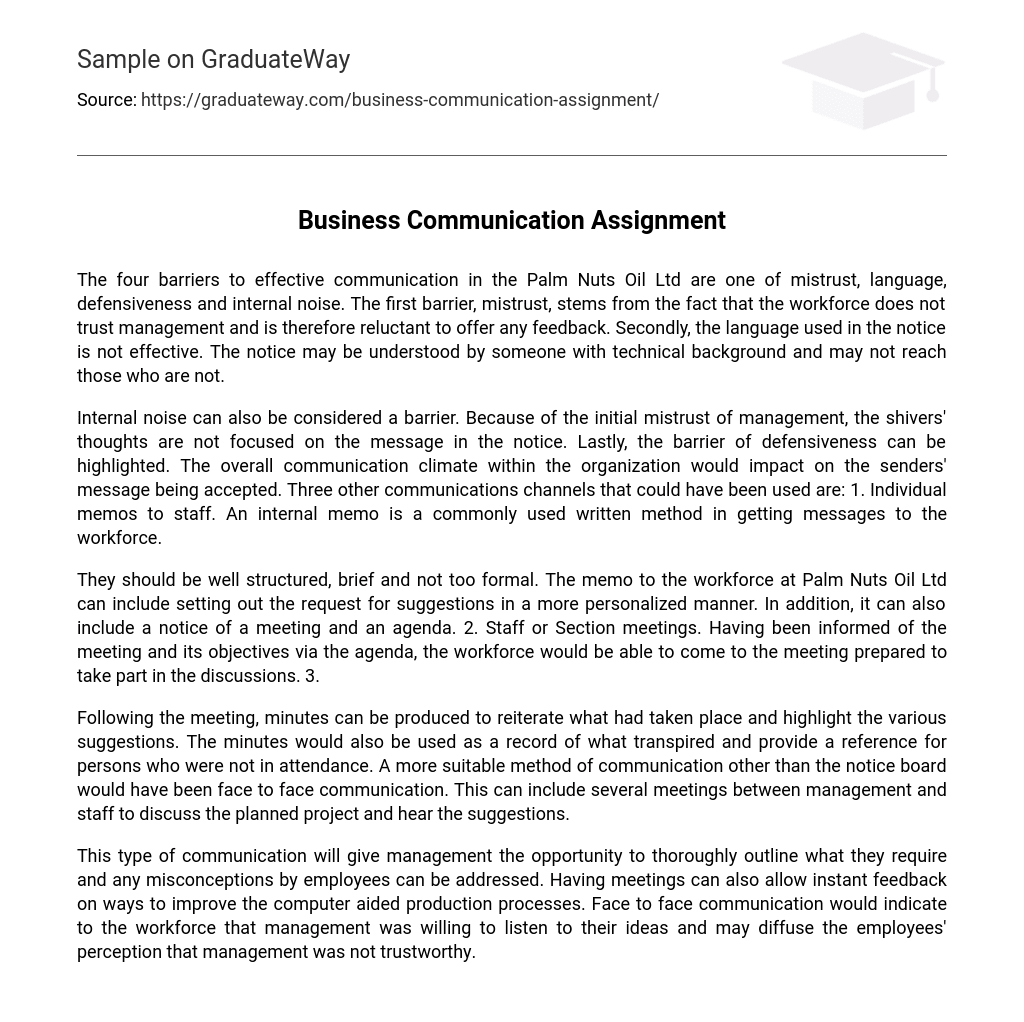The Palm Nuts Oil Ltd faces four obstacles to successful communication: mistrust, language, defensiveness, and internal noise. Mistrust arises from a lack of confidence in management, resulting in the workforce hesitating to provide feedback. Furthermore, the language employed in the notice is ineffective as it may only be comprehensible to individuals with technical expertise, excluding those without such knowledge.
Internal noise, such as initial mistrust of management, can act as a barrier to effective communication. This can cause the receiver’s thoughts to be unfocused on the message conveyed in the notice. Additionally, the barrier of defensiveness can also hinder effective communication. The overall communication climate within the organization plays a significant role in determining whether the sender’s message will be accepted. In order to overcome these barriers, three alternative communication channels could have been utilized: 1. Sending individual memos to staff, as it is a commonly used written method for communicating messages to the workforce.
The memo to the workforce at Palm Nuts Oil Ltd should be well structured, concise, and slightly informal. It can personalize the request for suggestions and also mention a meeting notice and agenda. Additionally, staff or section meetings can be informed about the meeting and its goals through the agenda, enabling them to come prepared and actively participate in discussions.
After the meeting, minutes can be created to recapitulate the occurrences and emphasize the different suggestions. These minutes will also serve as a documentation of what transpired and serve as a point of reference for those who were absent. An alternative and more appropriate means of communication, other than the notice board, would have been direct communication. This could have involved multiple meetings between the management and the staff to discuss the proposed project and receive suggestions.
This form of communication provides management with the chance to clearly state their requirements and address any misunderstandings from employees. Meetings also offer immediate feedback for enhancing computer aided production processes. Face-to-face communication shows the workforce that management is open to hearing their ideas and can dispel the perception of mistrust.





